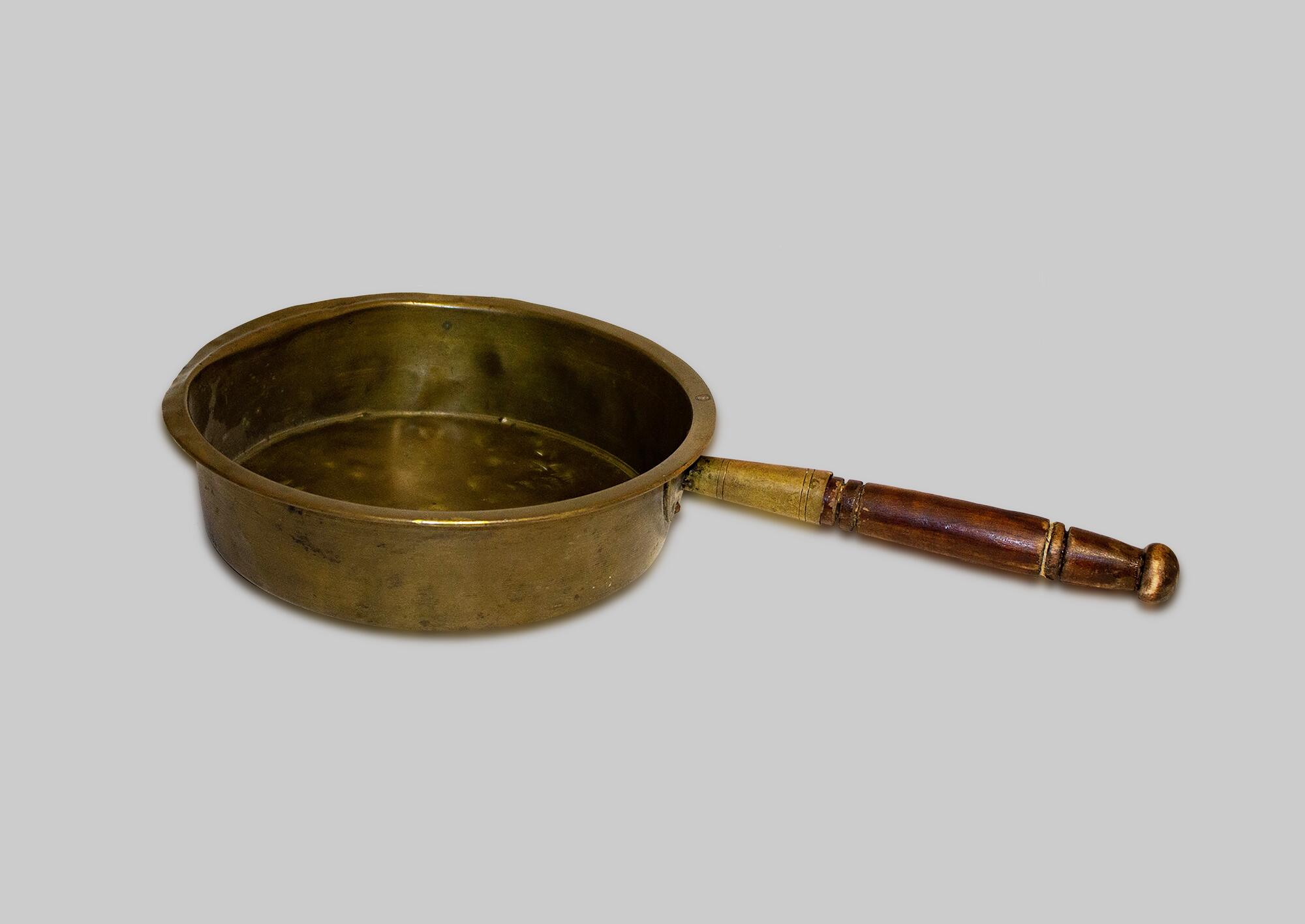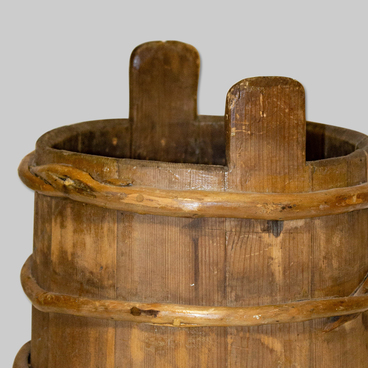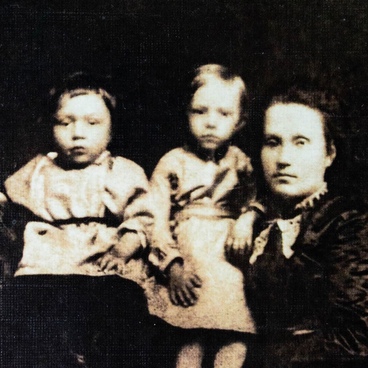Copperware has been used in Russia for ages. This sort of kitchenware was valued higher than the one made of wood. A samovar, a copper maslin pan, pots and bowls: these kitchen utensils were in every home.
The jam pan featured in the museum’s collection is made of yellow copper. It was this sort of pans that in the old days was considered the only suitable choice for jam making. The reason for this is very simple. Copper is one of the best heat conductors. During jam making, the contents of the maslin were heated evenly, did not stick to the bottom and, as a rule, did not burn. Moreover, one didn’t even have to stir the jam. If, nevertheless, the jam did burn, which was extremely rare, then first of all, the pan was filled with salted water and left to soak for several hours. After that, the pan was cleaned with a cloth.
However, for all the advantages of a copper pan, it had to be handled with care: in order to avoid ingesting copper, it was important to ensure that the bottom and walls of the pots were not scratched during preparation of the jam. Everyone knew this, and if the jam needed stirring, they used not a metal, but a wooden utensil.
A more common problem were the dull, greenish spots resulting from oxidation. Every homemaker knew that even a clean copper jam pot often lost its shine after washing and became dull. To avoid this, they tried not to leave the pots wet after cleaning, but wiped them dry right away.
One of the largest manufacturing facilities for copper and brass products was founded in the second half of the 19th century by a Russian entrepreneur, merchant of the second guild, Alexander Kolchugin. His company built a copper-rolling mill and a brass plant in the Vladimir Governorate. At the end of the 19th century, Kolchugin’s copper works began manufacturing kitchenware. Since 1922, the plant started making samovars and primus stoves. In the middle of the 20th century, the company began to produce nickel-plated teapots, silver-plated cutlery and kitchenware from nickel silver, an alloy of copper, nickel and zinc. Today, the company is called Kolchugtsvetmet. It produces about 30% of all rolled non-ferrous metal products in Russia.
The jam pan featured in the museum’s collection is made of yellow copper. It was this sort of pans that in the old days was considered the only suitable choice for jam making. The reason for this is very simple. Copper is one of the best heat conductors. During jam making, the contents of the maslin were heated evenly, did not stick to the bottom and, as a rule, did not burn. Moreover, one didn’t even have to stir the jam. If, nevertheless, the jam did burn, which was extremely rare, then first of all, the pan was filled with salted water and left to soak for several hours. After that, the pan was cleaned with a cloth.
However, for all the advantages of a copper pan, it had to be handled with care: in order to avoid ingesting copper, it was important to ensure that the bottom and walls of the pots were not scratched during preparation of the jam. Everyone knew this, and if the jam needed stirring, they used not a metal, but a wooden utensil.
A more common problem were the dull, greenish spots resulting from oxidation. Every homemaker knew that even a clean copper jam pot often lost its shine after washing and became dull. To avoid this, they tried not to leave the pots wet after cleaning, but wiped them dry right away.
One of the largest manufacturing facilities for copper and brass products was founded in the second half of the 19th century by a Russian entrepreneur, merchant of the second guild, Alexander Kolchugin. His company built a copper-rolling mill and a brass plant in the Vladimir Governorate. At the end of the 19th century, Kolchugin’s copper works began manufacturing kitchenware. Since 1922, the plant started making samovars and primus stoves. In the middle of the 20th century, the company began to produce nickel-plated teapots, silver-plated cutlery and kitchenware from nickel silver, an alloy of copper, nickel and zinc. Today, the company is called Kolchugtsvetmet. It produces about 30% of all rolled non-ferrous metal products in Russia.



